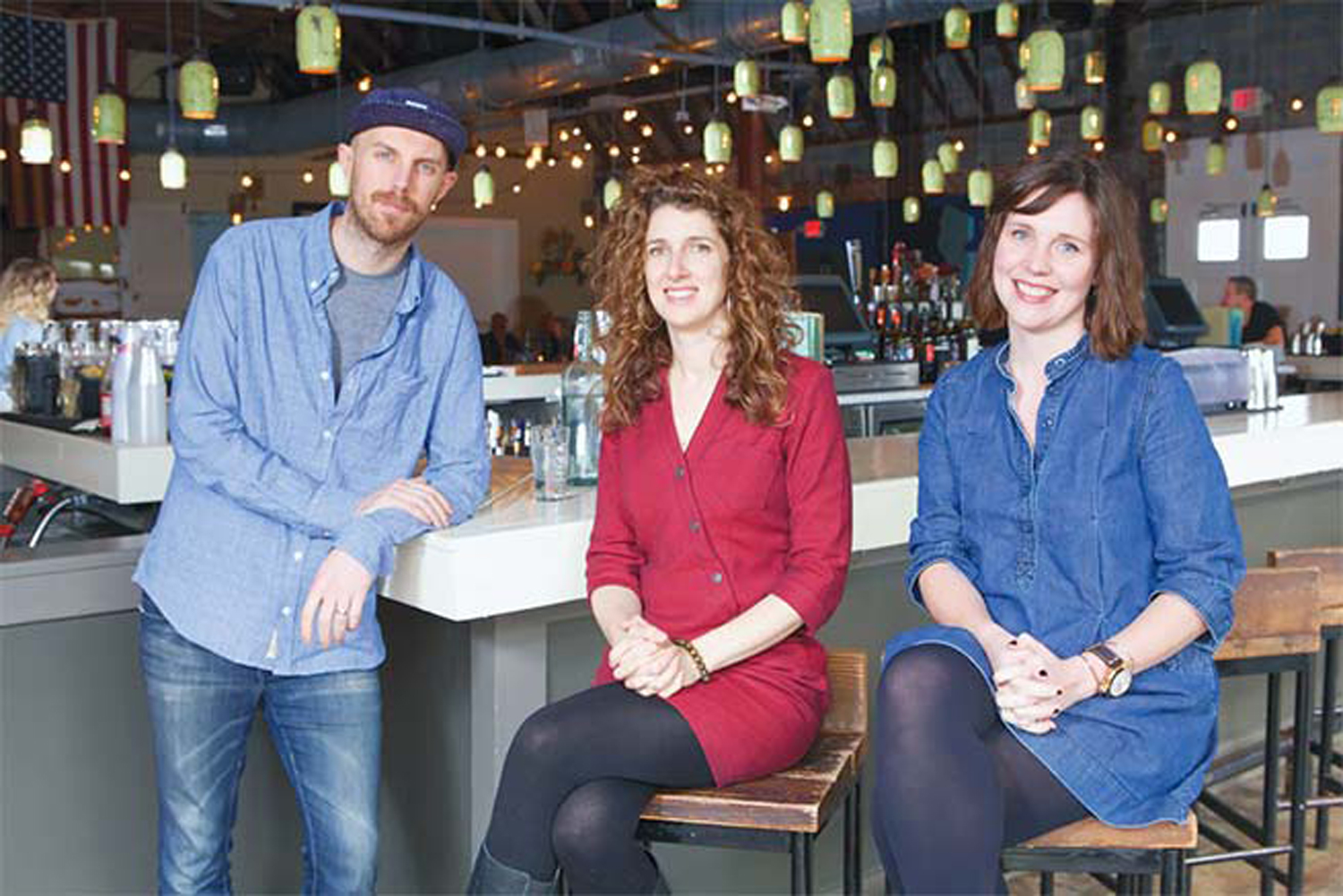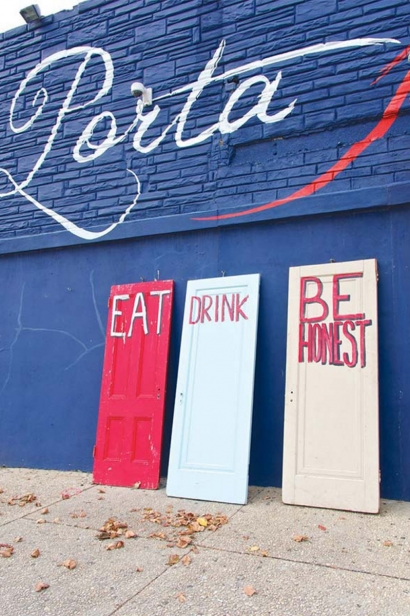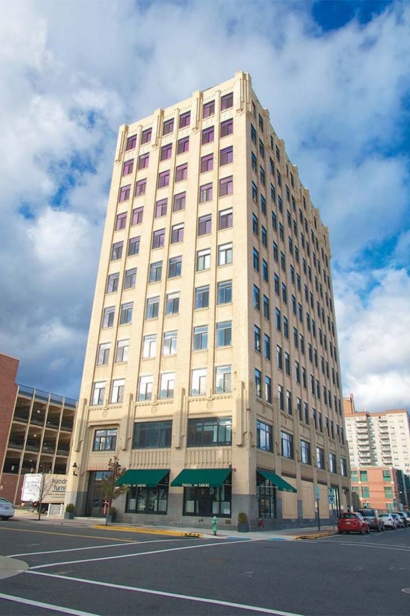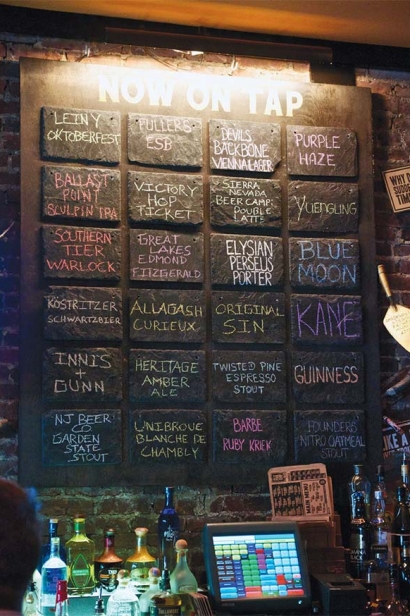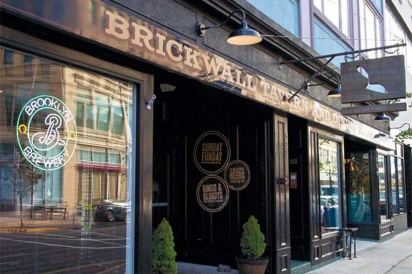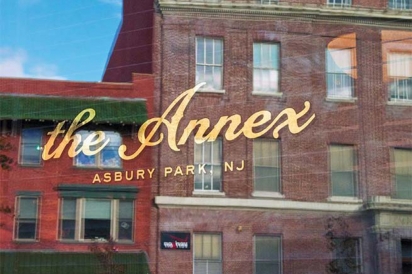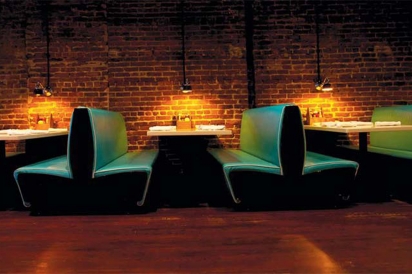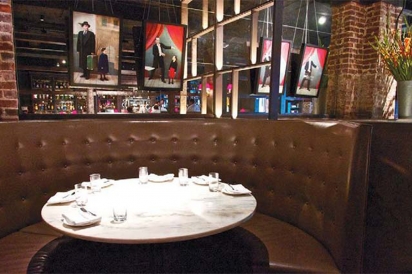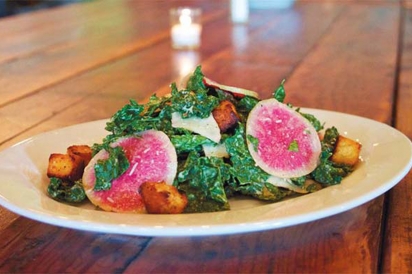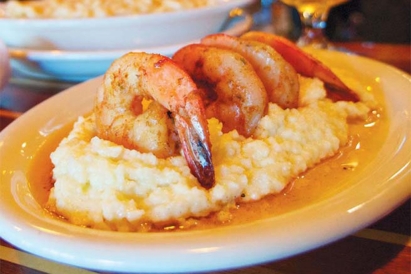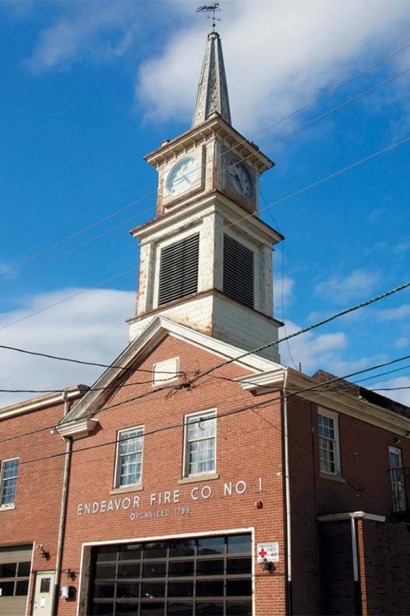Meet the Smith Restaurant Group
The restaurant group that re-imagined Asbury Park is ready for its next act
Smith. It’s the long and short of the name chosen by a dynamic group of entrepreneurs who, beginning in 2006, played a key role in the rebirth of Asbury Park, especially its downtown and especially its hospitality industry. As the group prepares to take on a few other Jersey downtowns in need of a reboot, it’s a name to remember.
“We like how anonymous the name is,” explains junior partner Mark Hinchliffe. “It lets our brands speak for themselves. And we like the idea of ‘smith’ being a maker of things.”
Headquartered in Asbury Park, Smith owns four popular restaurants there—a gastropub, a bar, a dance-club pizzeria and a French brasserie—as well as a 23-unit Art Deco condominium project. “At its core,” Hinchliffe says, “Smith is about transforming great American cities through hospitality.” While work certainly remains to be done in Asbury Park—crime remains a persistent and serious problem in some sections of the city—this Jersey Shore town is undeniably on the ascent, its rebuilt boardwalk filled during the summer and its downtown buzzing with new restaurants and an influx of culture, from coffee shops and boutiques to art galleries and a movie theater. Meanwhile, what might Smith’s next great American city be? Starting this year, the group hopes its unique brand of restauranteering will help begin a renascence in Burlington.
What has morphed into Smith started as Knockout, a printing company in Rahway founded in 1990 by Meg Brunette with partners Jason Watt and Kyle Lepree (who is also Brunette’s life partner). By 1996, Knockout had expanded into graphic design, and Brunette moved it to a then-unlikely spot: Asbury Park. “There was nothing going on in the city then; people were really still afraid of it,” Mark Hinchliffe recalls, referring to the high crime rate and deteriorating infrastructure that had plagued the city for decades. “But Meg fell in love with its bones. That’s what drew all of them. They saw something that most people didn’t.”
Knockout rented the eighth floor of an 11-story downtown building known to locals as “the gas company.” Today, it houses not only Smith, but also Pascal & Sabine, their French brasserie on the ground floor, and their Eureka condos on the top six floors. Soon after the move to Asbury Park, Brunette and Lepree hired architect Jim Watt (brother to partner Jason Watt) to design a home for them in nearby Brielle. In the process, they all became friends, and the two women eventually convinced Watt to relocate his architecture firm from Allenhurst and join them in Asbury Park.
In the ensuing years, Knockout branched out even further into design and branding, eventually developing a unique brand development process the partners call “Fishbird.” Dallas Hlatky, who like Mark Hinchliffe is a junior partner at Smith, explains Fishbird like this: “It creates a space to have a very open and free conversation around what you want to go after in your future. You do a lot of work to brush away invisible limitations so you can say, ‘If it were possible I would be doing X, Y, and Z.’ Just dream it and voice it.”
Why did they name the process Fishbird? “The story we tell,” says Hinchliffe, “is that a fish doesn’t know water and a bird doesn’t know air. A fish swimming in water has no other context, so that is its reality.” Essentially, Fishbird helps companies transcend those contexts and consider creative possibilities they may not have realized existed.
In the early 2000s the Knockout partners practiced Fishbird on themselves. The result was their foray into the world of hospitality, which set them on the path to becoming Smith. Explains Hlatky (who, by the way, is half-sister to Jason and Jim Watt): “Our partners had a conversation around, if they could have anything, what would the future of Knockout be? The answer: We’d love to be our own client. If we’re going to create the best brands in the world, then let’s create our own brand. Then they said, we’re in downtown Asbury Park and what we’d really love is to have a bar that we ourselves could go to. So the Brickwall happened.”
Brickwall Tavern & Dining Room, a gastropub, and its sister bar, The Annex, opened in 2006 on Cookman Avenue, back then a virtual dead zone. “Brickwall sort of anchored Cookman Avenue,” Hinchliffe says. “There wasn’t really a restaurant scene going on in the downtown. People still considered it a little dangerous—but it was also cool. It wasn’t this suburban kind of swankiness like in the surrounding towns. People appreciated that, and once they experienced the food and drink, it became the place for locals to go.”
Fredrica “Freddie” Vilardi was instrumental in the opening of Brickwall. Like Hinchliffe and Hlatky, she is in her early 30s and a Smith junior partner. (Frank Horneck, 31, is the fourth.) Vilardi joined Knockout in 2001 as a junior graphics designer, but like everyone at Smith, she has assumed many roles. “With Brickwall, we did everything; I recall going back and forth from the office to the site with buckets of glue and paint,” she says. Brickwall represented more than the firm’s entry into the restaurant business. According to Mark Hinchliffe, who came aboard around that time: “It was the beginning of doing only things that we’re excited about. It’s not about what the outside world wants, it’s about what gets us interested in doing the work. With all our brands we now go from concept to branding to interior design to opening the doors and managing and running the places. We do everything.”
That partly explains why everyone at Smith—which these days includes 20 to 25 staff members at their headquarters and 250 to 300 employees at the restaurants—doesn’t put much stock in job titles. Freddie Vilardi, for example, has at various times been tagged designer, creative director, spokesperson and head pizzaiola at Porta, the Smith pizzeria. All Smith executive chefs get moved around all the restaurants. “We do this to keep them creative and passionate,” says Hinchliffe, who has also taken it upon himself to complete the chef ’s program at the Natural Gourmet Institute in New York City. “Our chefs understand and enjoy this philosophy.”
Smith is headed by four partners and four junior partners, each instrumental in the business, though Hinchliffe does peg Meg Brunette as “founder, lead partner and kind of our guru.” In addition to Brunette, Lepree, and the two Watt brothers, there’s also a silent partner: Mike Alfieri, an attorney and developer. The partners range in age from mid-40s to 60.
“Meg is always the one to take shots across the bow,” Hinchliffe says. “So in 2010 she says, ‘We’re ready for a new place for us to hang out. We need a Neapolitan pizza restaurant.’ ” Hinchliffe adds: “We find this is different from how most people operate.
“Our intention was never to open a large place, but then we found the space Porta’s now in and, again, we fell in love,” Hinchliffe continues. (Porta, which is also a dance club, seats 150 and has been likened to an airplane hangar.) In a previous life it had been the Student Prince, notable for being where Bruce Springsteen first encountered Clarence Clemons.
“We immediately started ripping things out and trying to return it to its original. We’re always about removing the clutter until we find the heart of the space,” Hinchliffe explains. He mentions the Japanese aesthetic of wabi-sabi, i.e., embracing imperfection. “It’s one of the main themes that run through our designs. We’re never trying to get it perfect-perfect, we like rawness and the mix of old and new.”
Approximately three months later, Porta opened on Kingsley Street. The addition of dancing at Porta was a typical Smith development. “One night, Meg and I just started dancing,” says Freddie Vilardi, who had by then become a pizzaiola certified by the Associazione Pizzaiuoli Napoletani. Immediately, customers joined in the spontaneous dancing. “So,” Vilardi says, “that turned into, we need to allow people to dance. We redesigned the other side of the space, which was being used for storage, and turned that into a club.” One week later they hired a DJ.
But Porta was not an immediate home run. “There are times in summer now that we do a thousand pizzas a day,” Hinchliffe says. “But that first year, in the fall, sometimes we’d do maybe ten.” An unexpected break came in 2013 when The New York Times gave Porta a rating of “excellent.” “That took us to a whole other level,” Hinchliffe says.
Since the original Porta opened, another Smith restaurant serving Porta-style pizza, The Monk Room, debuted in Newark; a third Smith pizza restaurant, Porta Jersey City, just opened its doors in November. But not every idea Smith touches turns to gold—one that didn’t is Goldie’s, a restaurant on Asbury Park’s Cookman Avenue that featured fine vegan dining, a liquor license and a cool space inspired by 20th-century Danish design. Despite great reviews from food critics, Goldie’s closed in September 2014 after a few menu reboots didn’t draw in enough customers.
But for every Goldie’s, Smith has multiple success stories. Around the same time Goldie’s opened in late 2013, so did Pascal & Sabine, Smith’s French brasserie named for the children in the classic French short film The Red Balloon. The Monk Room, opened in Newark near the Prudential Center the following month. Both have had strong first years.
Another major shift took place during this time: the evolution of Knockout to Smith. In 2013, the branding and design business formed a full partnership with Jim Watt’s architecture firm and named themselves Smith.
Mark Hinchliffe explains: “When Porta was built, it was still Knockout doing branding and design and Jim Watt and his architecture firm partnering with Knockout on building. They said, we had so much fun on the creation of Brickwall and Porta, let’s just come together under the same roof.”
For 2015, Smith has set its sights on the rejuvenation of another Jersey waterfront town that has lost its luster: Burlington City. Decades after Knockout’s inception, its Rahway roots helped bring the group to the Burlington City project. Last summer, Smith was looking to expand their restaurants further outside Asbury Park. “When Knockout was in Rahway they had become friendly with then-mayor Jim Kennedy,” Hinchliffe says. So they contacted Kennedy with the idea of establishing “some stuff ” in Rahway. Kennedy told them he had just been hired by Burlington to manage the resurgence of that once-thriving Delaware River town, and suggested they come check it out. “They quickly took him up on that offer and there was an immediate interest in and love of the place,” Hinchliffe says.
In typical Smith fashion, soon all the Smith partners and two junior partners had purchased residences from among Burlington City’s rich historic housing stock. Freddie Vilardi and Jim Watt have since made Burlington their primary residence.
Dallas Hlatky sees commonalities between Burlington and Asbury Park as it was more than a decade ago. “It’s similar to what the partners—especially Meg—fell in love with there: the location on the water, the beautiful architecture and the city infrastructure. But people have sort of forgotten about it as a place,” she says. There seems to be great potential for the area. Burlington City, which has a population of just under 10,000, has a light rail system, is only 20 minutes from Philadelphia, and has a large parklike promenade along the Delaware River that is being rejuvenated. Some of its historic buildings date back to its origins as a Quaker settlement in 1677.
The first property that Smith will convert into a restaurant is a 16,000-square-foot former firehouse on East Union Street with a historic wooden clock tower. Smith closed on the property in September but renovations and construction have not yet begun. Much remains to be decided, including exactly what kind of food the restaurant will serve, but the Smiths hope to have it open in mid-2015. More plans are in the works. “We are in the process of purchasing a small tavern,” Hinchliffe says, “and in talks about some other exciting properties which we are not at liberty to discuss quite yet.”
The group sees 2015 as the year of Burlington City. “Ostensibly, we would have a chance to get involved in the development of this place at an even deeper level than we did in Asbury Park—a kind of Smith City,” Hlatky says. “Jason Watt said something once that really stuck with me: that the world is so abundant, the universe is expanding, everything is available to you. If you have an open hand you can receive everything that’s out there. That’s the context the partners put themselves in, and then they ask us to go along with them.”
That, in a nutshell, is the Smith philosophy.


